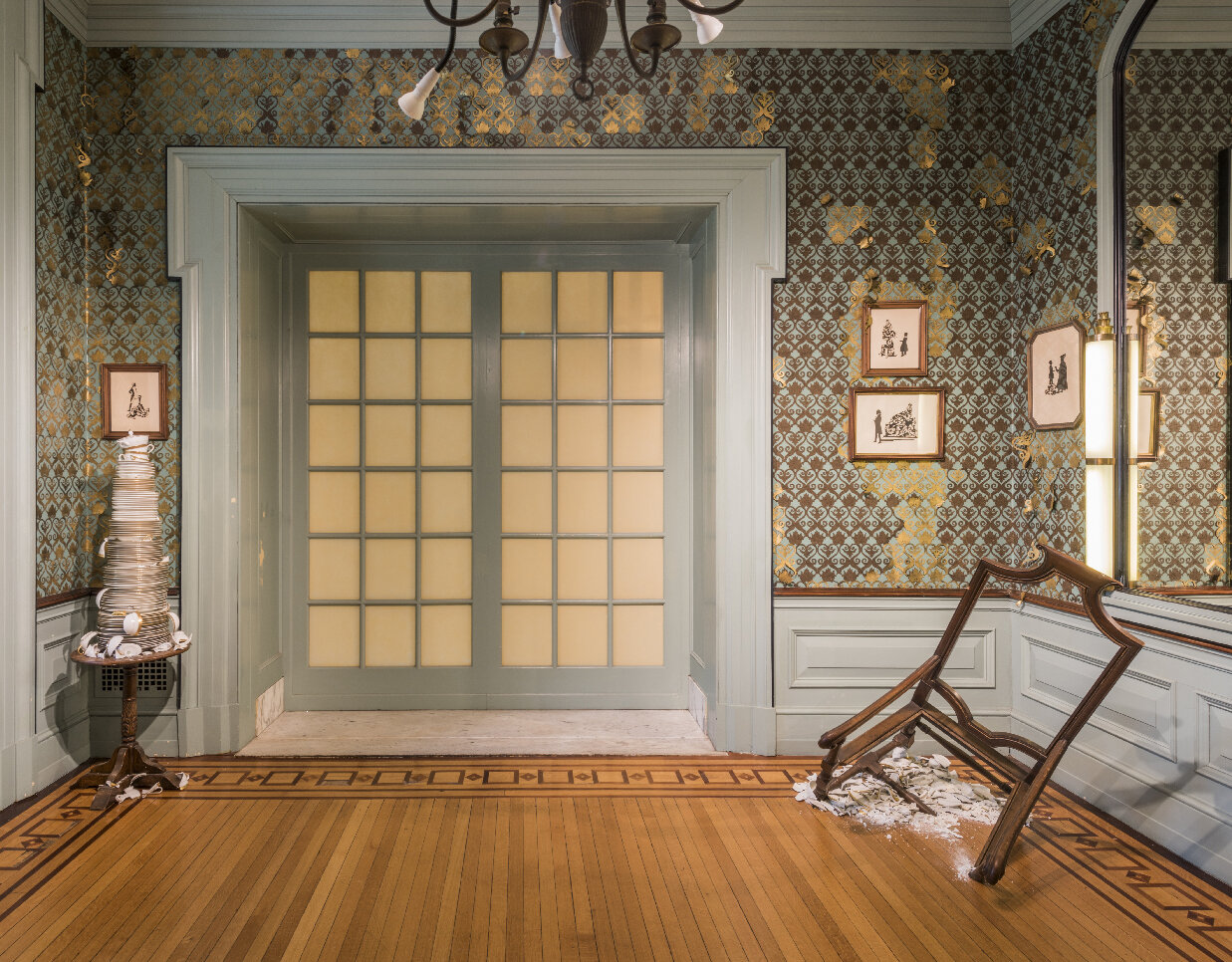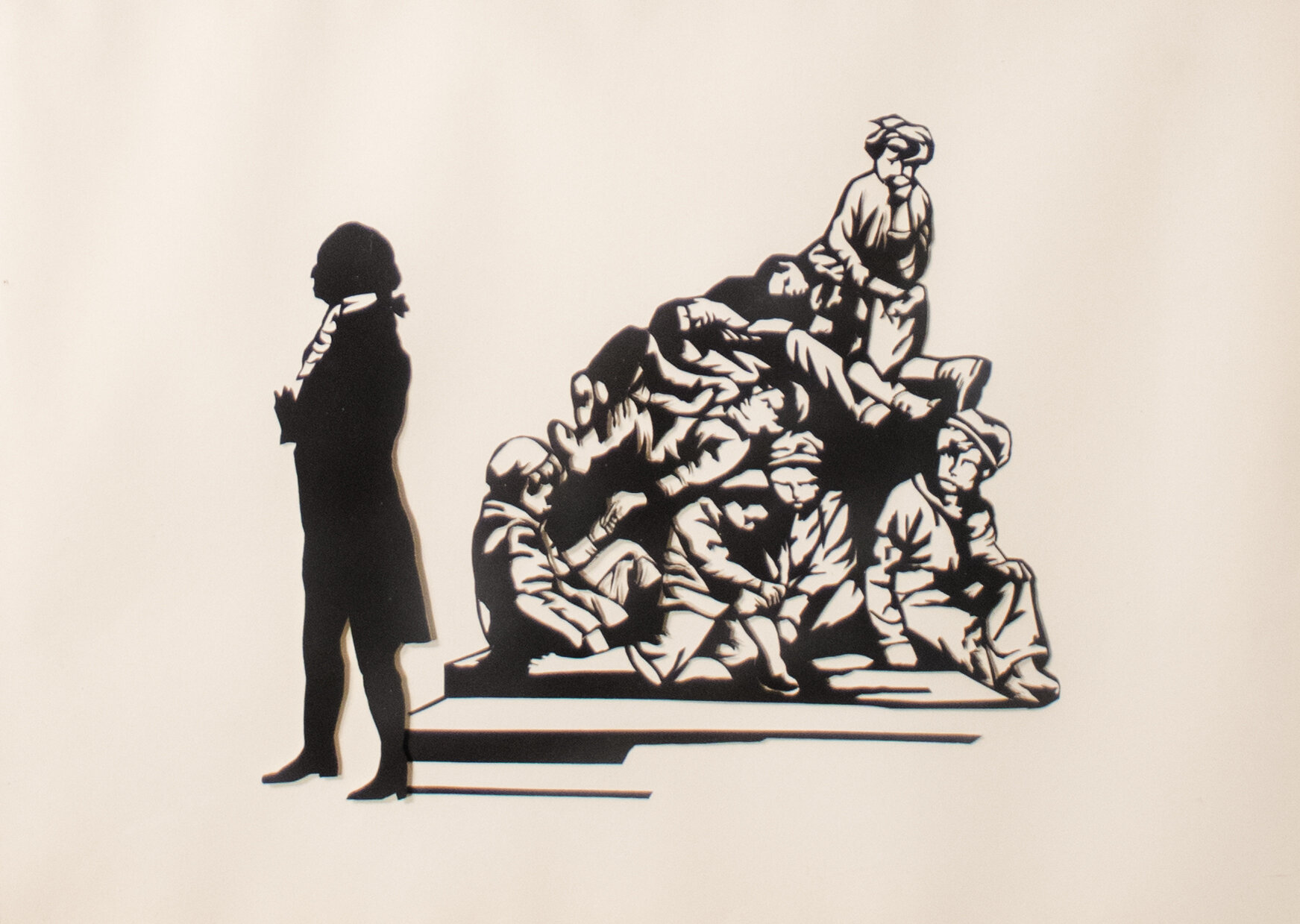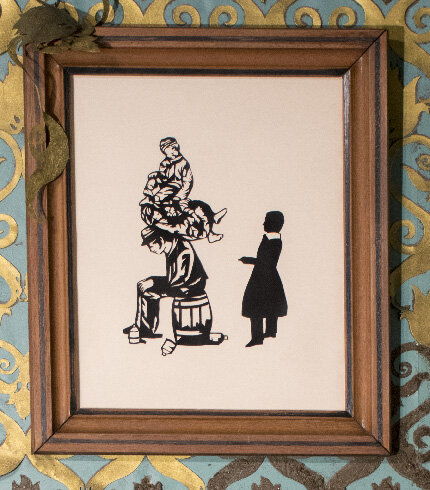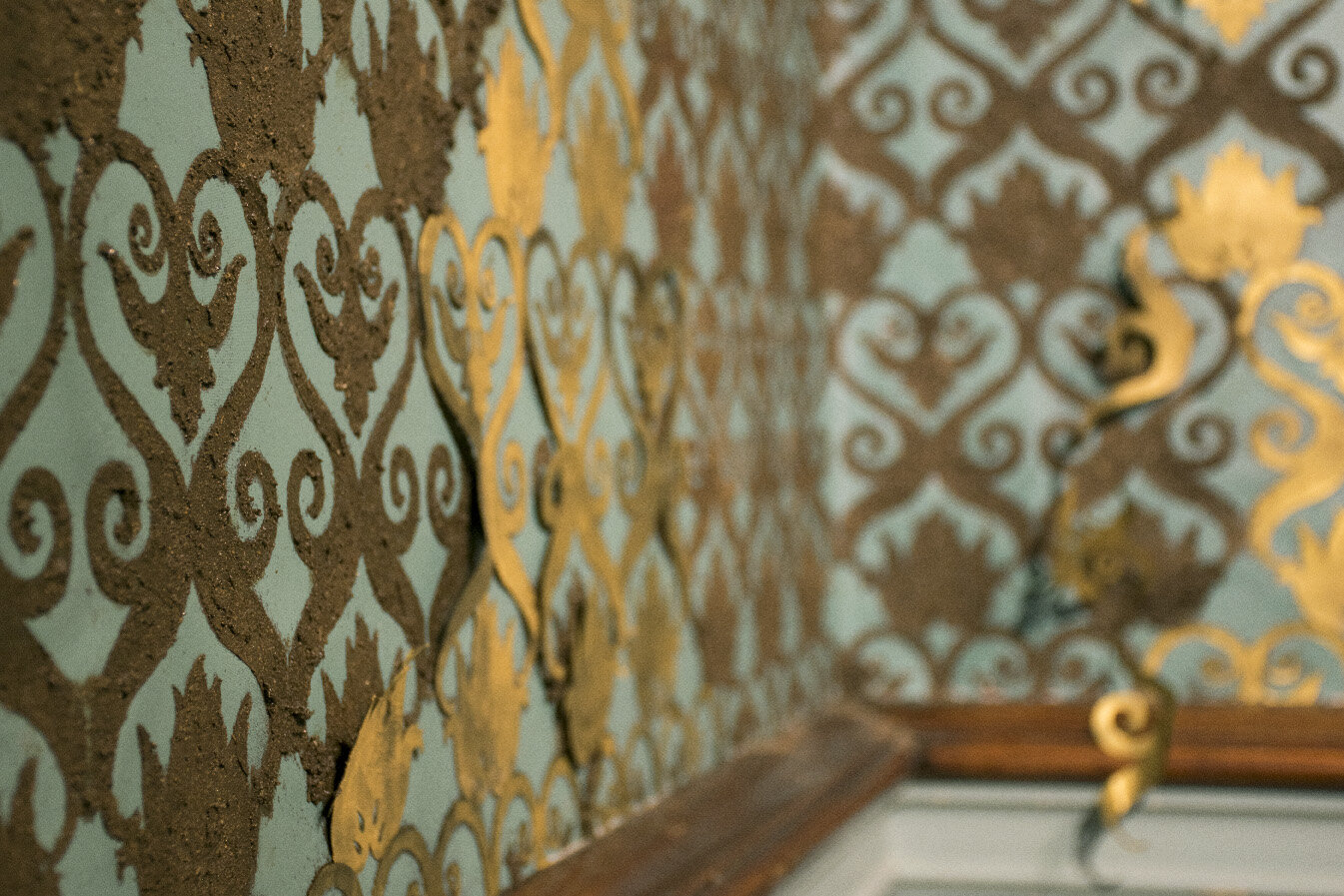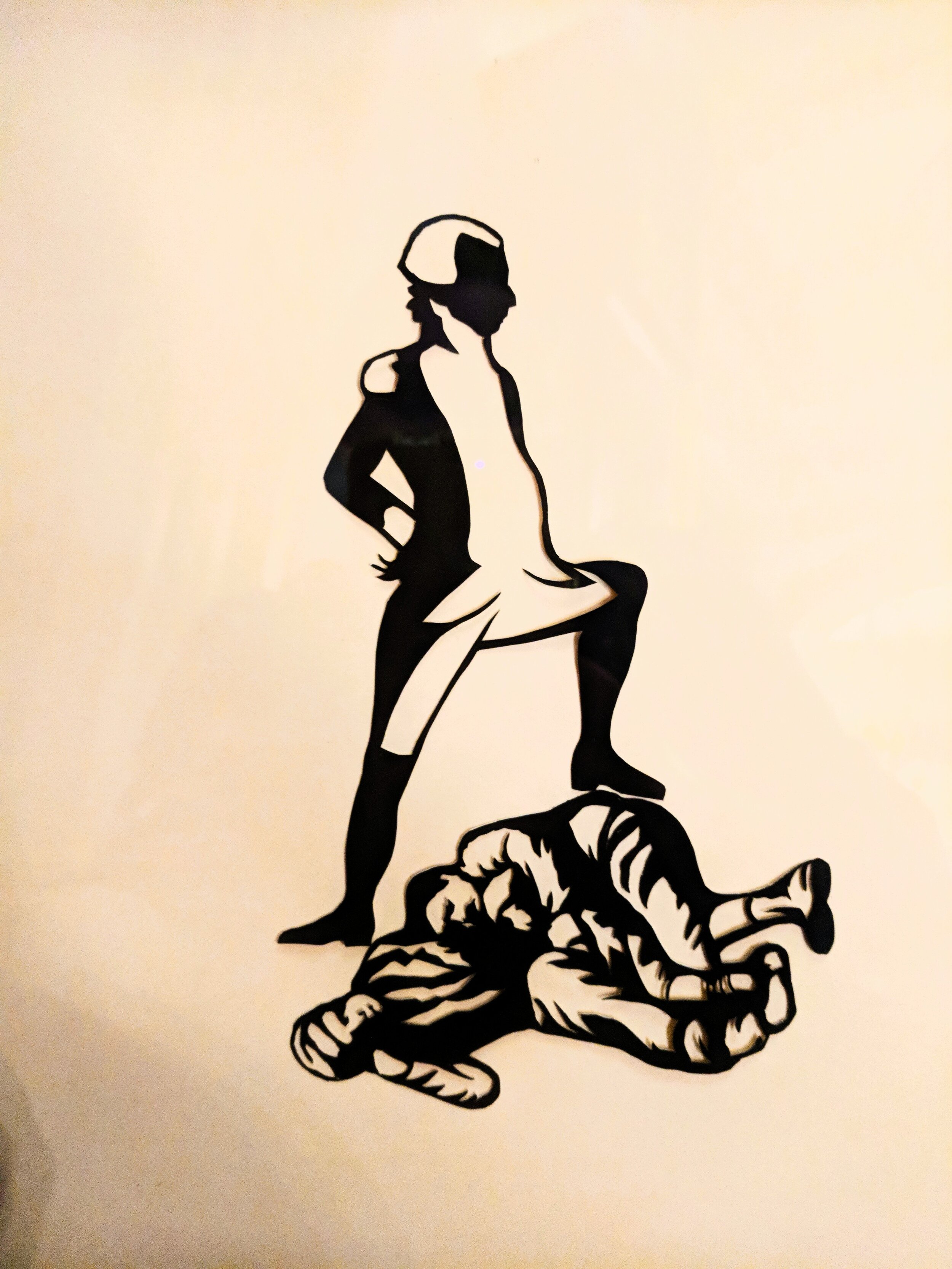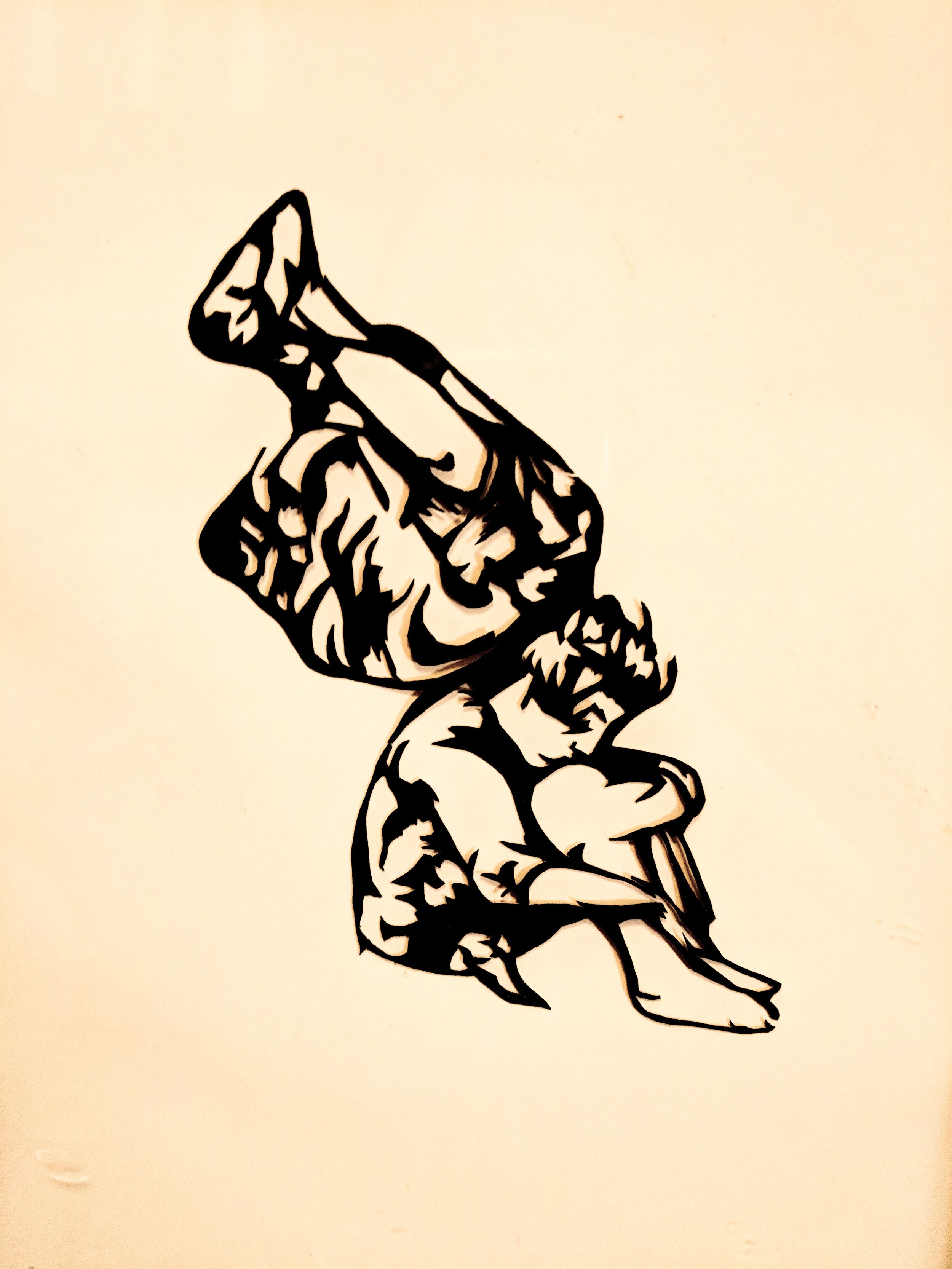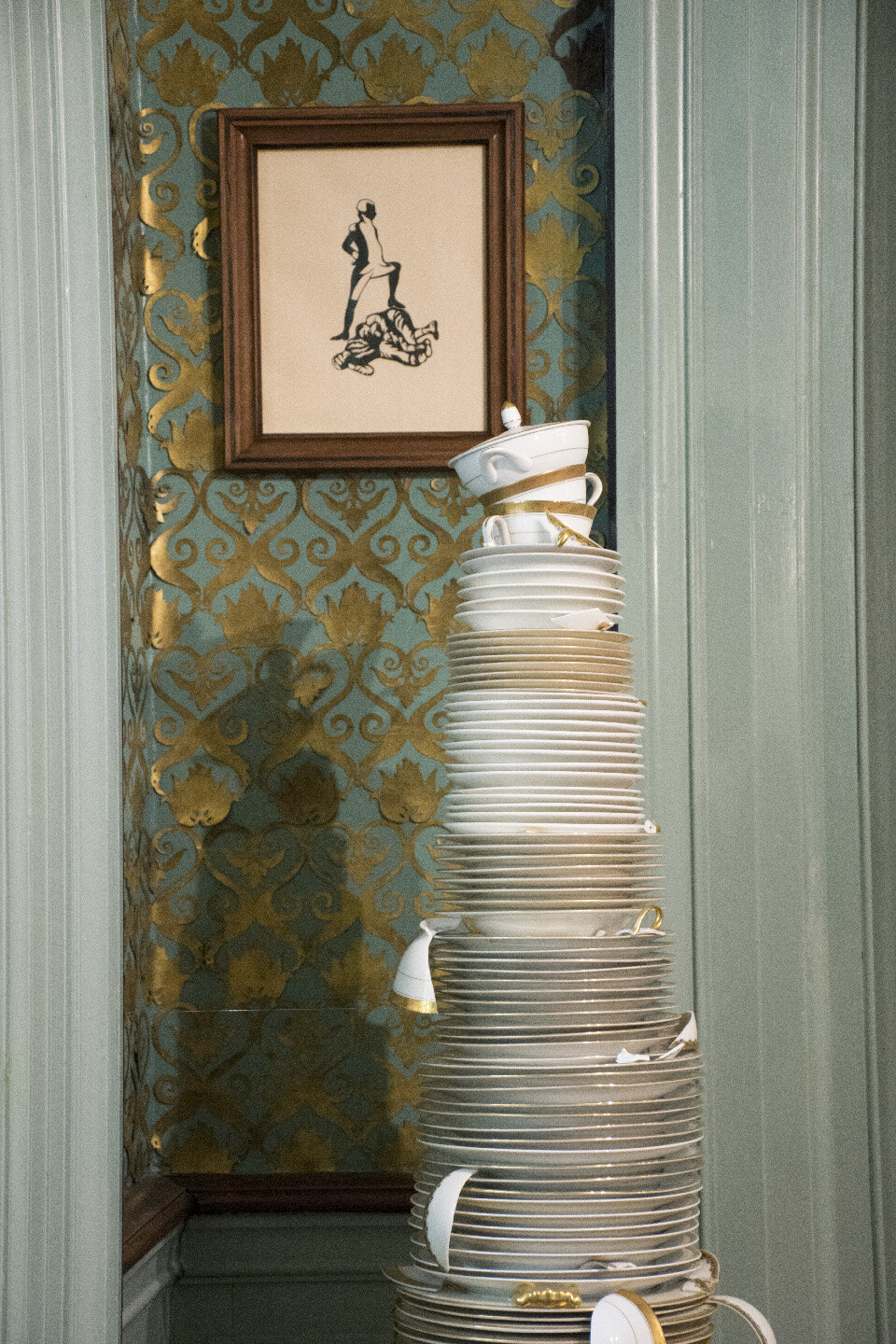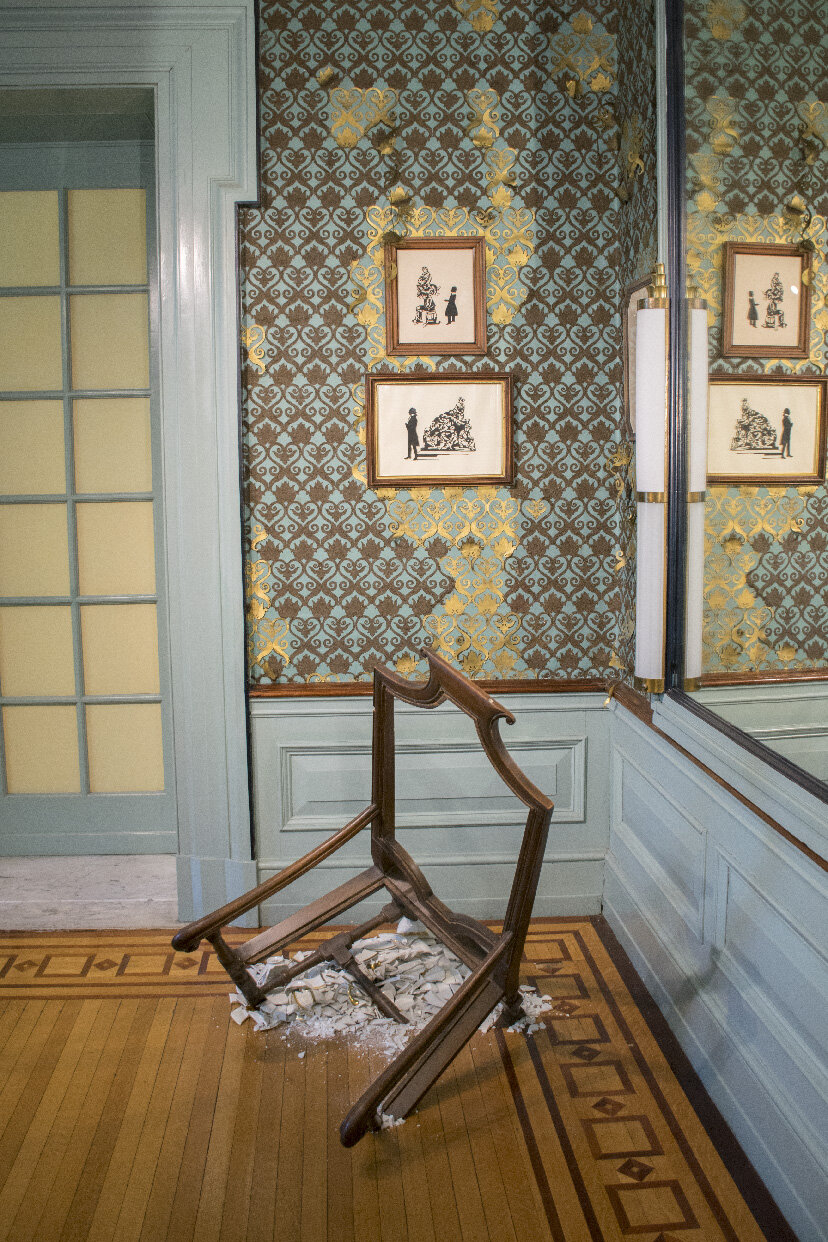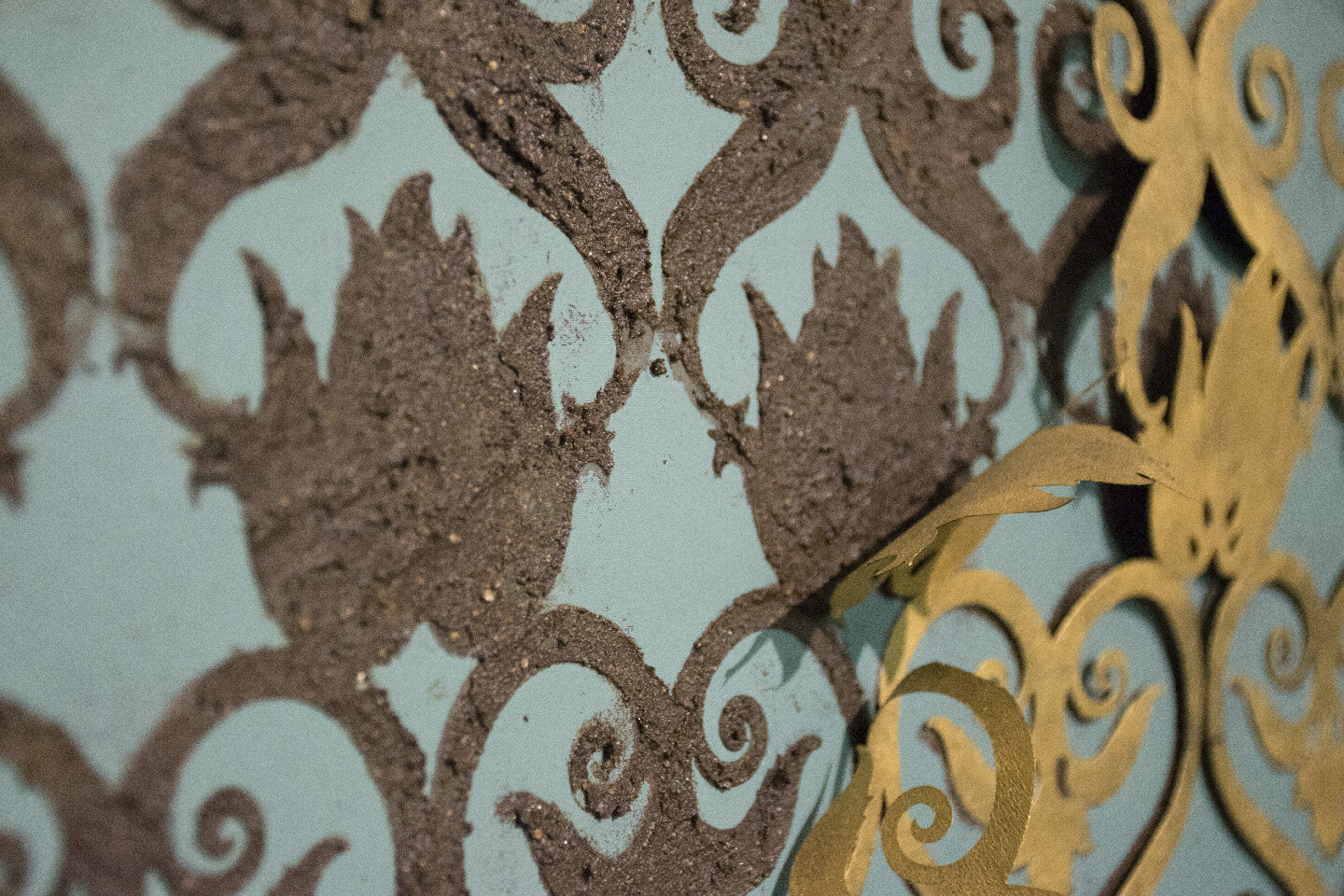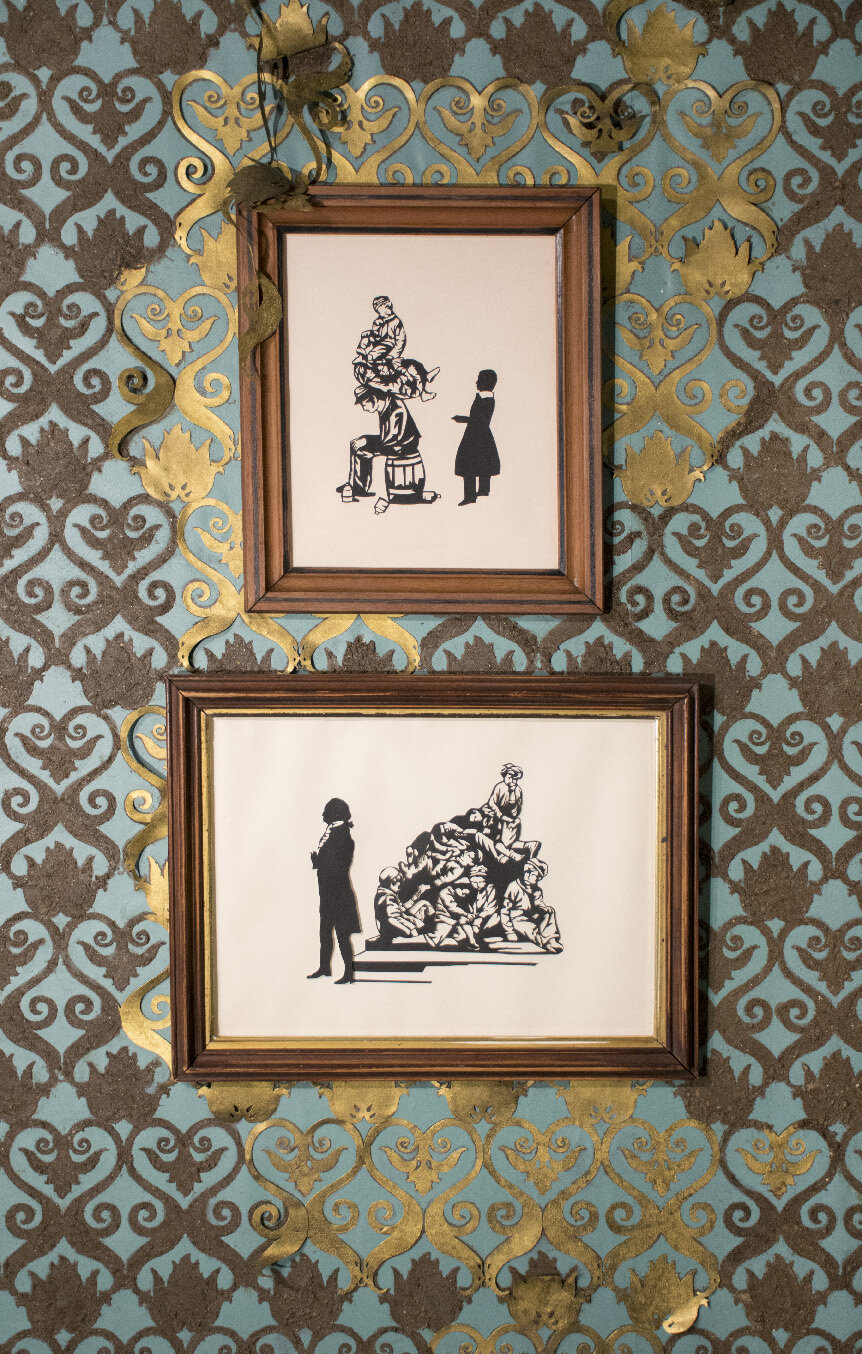Threadbare and Tarnished: Tales from a Gilded Age, 2016
Talia Greene’s installation delves into themes of class and gentility, as well as accumulation and deterioration , to explore the history and legacy of the Gilded Age. The piece takes inspiration from the contrasting elements of Glen Foerd: its Gilded Age motifs and opulent objects, combined with the evidence of hoarding and deterioration revealed behind the scenes. The central element of the installation is a gilded wallpaper pattern which peels off to reveal a texture of mud beneath. Suggesting alternate views of the house over time.
The gold veneer of the wallpaper pattern references the title of the novel “The Gilded Age, A Tale of Today” coined by Mark Twain and Charles Dudley Warner. The phrase ironically highlights the thin layer of gold which concealed the problems of poverty, inequality, and corruption of the era.
Adorning the wallpaper, works from the mansion’s collection are juxtaposed with the new cut paper pieces. The new pieces combine figures from the mansion’s collection of silhouettes, with images of poverty from the Gilded Age. As the deterioration of the wallpaper increases, so does the absurdity of the poses in the cut paper pieces. The children in the images are forced into impossible poses, carrying each other’s burdens and piling atop one another, while being ignored or suppressed by the genteel silhouettes.
The themes of accumulation (or hoarding) and deterioration are echoed in two sculptural vignettes. An awkwardly balanced chair seems to sink into the floor, which an equally precarious stack of china provides towering counterpoint.
Talia Greene, has created site specific wallpaper installations at Morris-Jumel mansion in New York City, The American University Museum in Washington DC and The Print Center, Philadelphia, and is a member of the Philadelphia collective Grizzly Grizzly.


